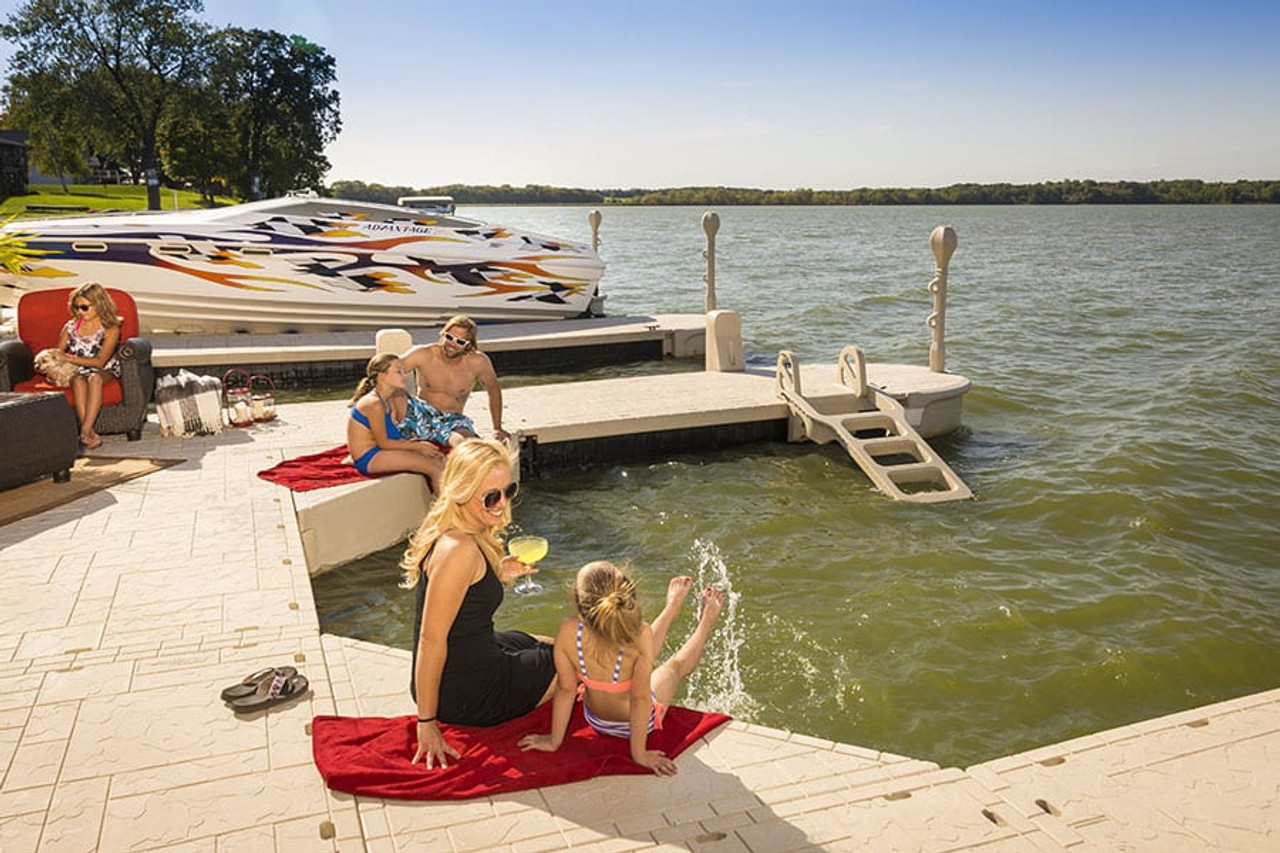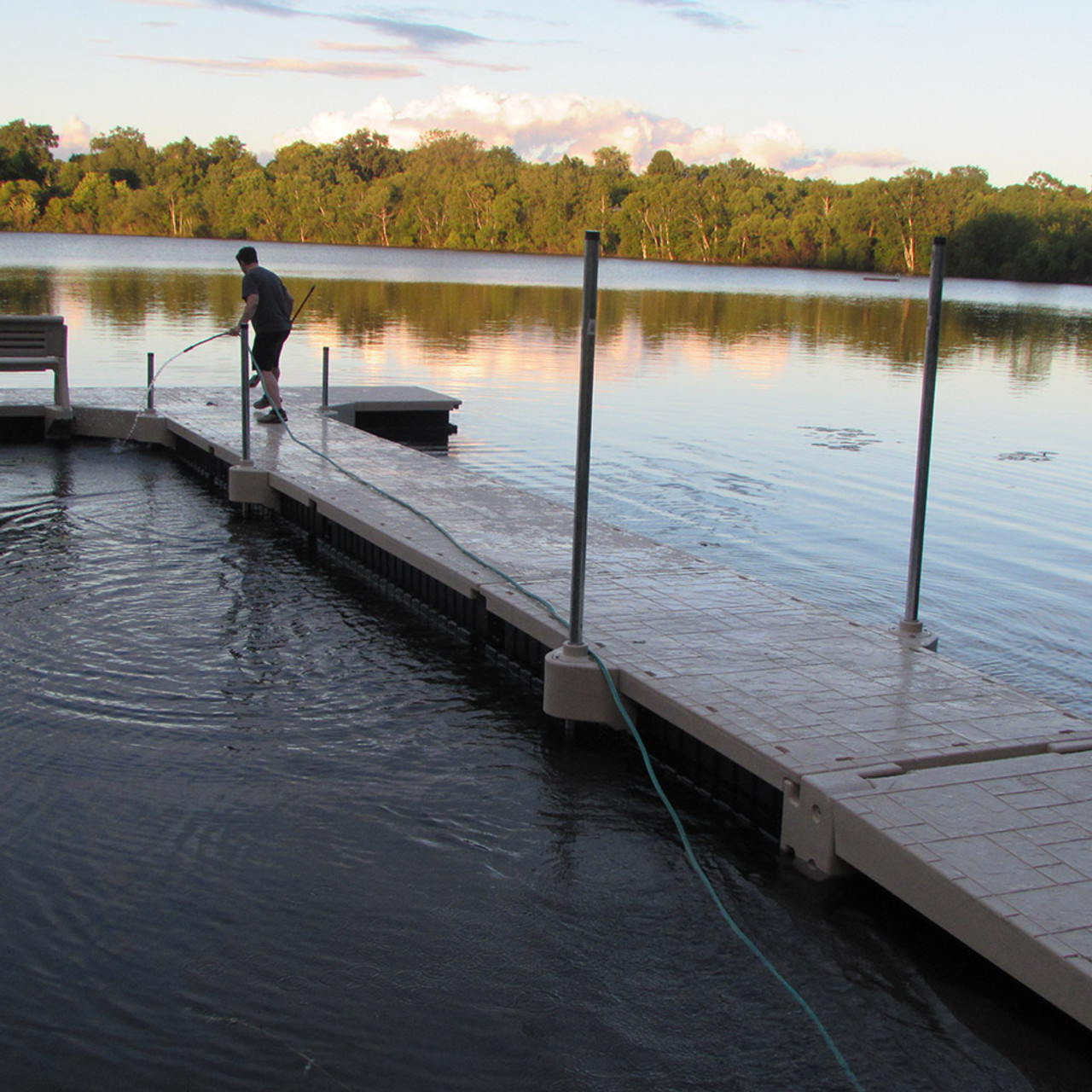Browsing the Options: Choosing the Right Dock Company for Your Floating Dock Job
Upgrade Your Beachfront With Long Lasting Floating Docks
Upgrading your waterside with sturdy floating docks can substantially boost both functionality and looks, providing a versatile option for numerous water tasks. With a range of materials offered, consisting of low-maintenance alternatives and traditional wood, choosing the ideal dock can enhance your individual style and meet useful requirements.
Advantages of Floating Docks
Floating docks deal a plethora of benefits that improve their charm for different maritime applications. One of the primary benefits is their adaptability to changing water levels - dock company. Unlike conventional fixed docks, floating docks surge and autumn with the tide, guaranteeing regular accessibility for watercrafts and boat regardless of ecological conditions. This attribute substantially minimizes the risk of damage to vessels, as they remain firmly tied also throughout variations in water deepness.
Additionally, floating docks are simpler to install and move, offering flexibility for short-lived or seasonal use. Their modular style enables personalization to fit specific requirements, whether for personal marinas, residential waterfronts, or industrial applications.
Moreover, floating docks develop minimal disruption to the aquatic setting, preserving local ecological communities and decreasing the chance of disintegration. They additionally supply boosted security and security for customers, as their resilient nature supplies a much more flexible surface than stiff structures.
In addition, floating docks can help with a varied range of tasks, such as angling, swimming, and entertainment boating, making them a useful possession for beachfront advancement. Their convenience and usefulness make floating docks a recommended selection for a variety of maritime jobs.
Selecting the Right Materials
Choosing suitable products for floating docks is vital to their long life, efficiency, and overall effectiveness. When selecting products, consider elements such as ecological direct exposure, upkeep needs, and structural stability. Typical materials include wood, plastic, light weight aluminum, and composite choices, each offering distinct advantages and disadvantages.
Wood, while cosmetically pleasing, requires routine maintenance to stop rot and degeneration. Pressure-treated wood can enhance toughness, but it may still catch water damage over time. Plastic drifts, commonly made from high-density polyethylene, are immune to rust and need very little upkeep, making them an eye-catching selection for low-maintenance applications.
Aluminum is one more sensible option, understood for its strength and light-weight residential or commercial properties. It is immune to rust and can stand up to rough weather conditions, although it might be more costly than other materials. Composite products integrate the most effective features of wood and plastic, offering a resilient and low-maintenance option that simulates the look of wood without the connected drawbacks.
Inevitably, the option of product must straighten with the intended use, environmental considerations, and spending plan constraints, guaranteeing a functional and durable floating dock that fulfills your specific requirements.
Installment Process Introduction
The effective setup of a floating dock counts on cautious preparation and execution, making certain that it operates properly in its desired environment. The initial step involves analyzing site problems, including water deepness, coastline attributes, and dominating weather patterns, which will certainly notify the dock layout and anchoring system.
Adhering to the site analysis, the next stage is to prepare the floating dock parts. This consists of putting together the her comment is here structure, securing floats, and connecting any type of required equipment. It is important to make sure that all links are waterproof and durable to hold up against aquatic problems.
When the dock is put together, the setup procedure begins with positioning the dock in the water. This can entail a crane or various other lifting devices, especially for bigger structures. Proper positioning is vital for performance and safety.

Maintenance Tips for Long Life
Routine upkeep is necessary for guaranteeing the longevity and ideal performance of a floating dock. To achieve this, start with routine assessments a minimum of two times a year, concentrating on the stability of the dock's structure, including the flotation protection gadgets and attaching hardware. Try to find signs of damages, corrosion, or wear, and address any type of concerns quickly to stop further degeneration.
Cleansing is another important aspect of upkeep. Get rid of debris, algae, and barnacles from the dock's surface to protect against slippery conditions and preserve visual allure. Use a soft brush and a light detergent to avoid damaging the dock's products.
In addition, ensure that the dock is correctly anchored and protected to hold up against seasonal changes in water levels and weather condition problems. Examine the anchoring system for security and make modifications as essential.
Enhancing Your Exterior Aesthetic
To develop an aesthetically appealing outdoor space, incorporating a drifting dock can dramatically improve the general visual of your beachfront residential property. Floating docks are not only functional but can additionally function as a striking centerpiece that complements the natural environments - floating dock services. Readily available in numerous products and styles, these docks can be customized to match your home's architectural style and landscape
The addition of attractive components, such as incorporated illumination or trendy railings, further boosts the dock's aesthetic charm. Consider using all-natural wood finishes, which mix effortlessly with the atmosphere, or opting for modern products like aluminum or composite decking that supply a smooth, contemporary appearance.
Tactically putting planters or seating locations on or around the dock can develop inviting rooms that motivate relaxation and enjoyment of beachfront views. In addition, integrating colors and appearances that balance with your landscape will develop a cohesive aesthetic throughout your exterior area.

Verdict

Updating your waterfront with long lasting floating docks can dramatically improve both capability and looks, providing a flexible solution for different water tasks. Unlike traditional fixed docks, floating docks increase and loss with the tide, Full Report making sure consistent ease of access for watercrafts and watercraft regardless of ecological problems.Selecting proper products for floating docks is crucial to their long life, performance, and general efficiency.As soon as the dock is assembled, the setup More hints procedure commences with positioning the dock in the water.In recap, floating docks deal numerous benefits, consisting of flexibility to water level adjustments and a selection of material alternatives.